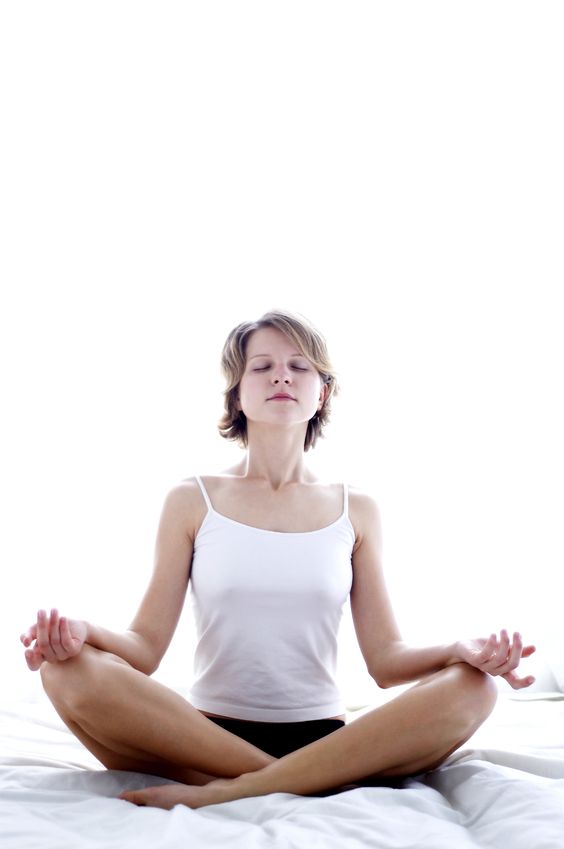Meditation can help increase your awareness and understanding of your mind at night. Practicing meditation before bed prepares your mind and body for a restful sleep. Here are ten steps to bedtime meditation and better sleep!
Step One: Lie comfortably in bed, and take five deep breaths, in through the nose and out through the mouth. As you’re breathing, focus on your lungs breathing in air and your chest expanding. While you breath out, imagine the thoughts and feeling of the day draining out of you and melting away.
Step Two: Think about how your body and your mind are feeling. Don’t worry about rushing this part of the exercise, there will likely be thoughts still spinning around your head, let them settle and think about each one.
Step Three: Now think about your physical points of contact, focus on how your body is resting on the bed and your weight against the mattress. Notice the points of contact that are the strongest. Take note of any noise or other sensations. Recognize whether it is a sound you can control or something uncontrollable. If it is not something that can be changed, instead of attempting to ignore it, focus on the sound. Remain present on the sound for about 30 seconds and then bring the attention back on your body.
Step Four: First get a general sense of how the body feels. Does your body feel heavy or light? Comfortable or irritated? Then mentally scan your body, starting at the top of your head to the bottom of your feet, doing this several times, and observing any tension you may find. If there is any tension, take comfort in the knowledge that sleep will soon relieve that
Step Five: Take notice of the rising and falling sensation of your breathing. There is no right or wrong way to breath, so just relax and listen to your own body. Think about how your breathing, is it long or short, etc.
Step Six: Continue to watch your breathing for a few minutes. It’s normal for your mind to wander, if it does just bring your attention back to breathing. Naturally move on to the next step after a few minutes
Step Seven: Think back about your day, starting from the first thing you can remember, and then follow your memories chronologically through the rest of your day. It does not need to be in detail, it’s more of a general overview. It’s natural to get distracted during points of your overview, so if you find your mind wandering, simply bring your mind back to your day’s memories.
Step Eight: Now that you have thought through your day all away up to the current moment, you can return your focus to your body. Start with the small toe on the left foot and imagine your turning off the lights for the night, giving your body permission to shut down. You can even stay “switch off” or “and rest” in your mind to give your little toe an official goodnight. Continue with the other toes, the ball of your foot and then all the way up your leg.
Step Nine: Before moving the exercise to your next leg, reflect on the difference between your “switched off” leg and your other leg. Then repeat the exercise, starting again with the toes and working your way up to the waist
Step Ten: Continue the exercise up the waist to the arms, hands and through the rest of your body until you’ve reached your head. Take time to appreciate your body free of tension, and allow your mind to wander until you fall asleep.
If you don’t immediately drift off to sleep it’s not because you have done the meditation wrong. Remember that this exercise helps open the mind for sleep, it does not cause instant sleep results.



Comments are closed.